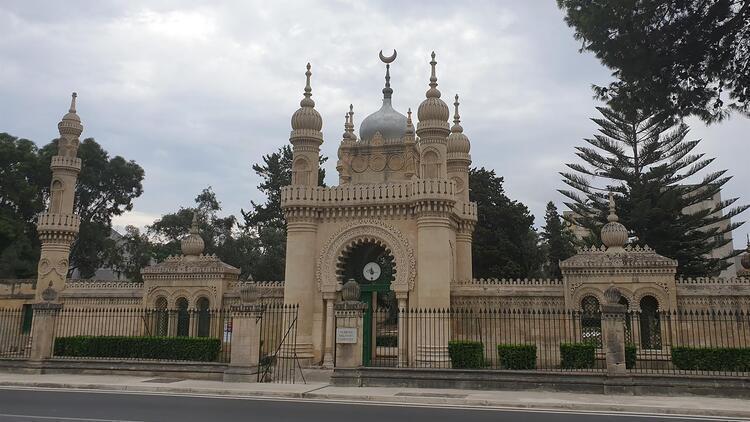
Maltese authorities have refused a planning application to turn a site adjacent to the Turkish military cemetery into a business complex, a victory for campaigners who have been trying to stop construction plans near the historic site in the Mediterranean island.
The authorities cited that the scale of the project was too substantial to be built next to the monument, which is called the “Ottoman Taj Mahal” by some locals due to its architecture.
The possibility of the realization of the project had raised concerns that the historical cemetery, which was built in 1874 by the request of the Ottoman sultan Abdulaziz I in the country’s Marsa town, would be irreparably damaged.
Stephen Farrugia, the architect for the project, slammed the relevant authorities on a hearing held on Jan. 26, saying the assessment process for the application had “failed completely,” according to reports from Maltese media.
Farrugia said he had received no further guidance on how to take the project forward in a way the authority would find acceptable after being told to scale down his plans and introduce a buffer zone around the development to protect the cemetery, a report by the Valetta-based media platform Times of Malta noted.
Speaking during the hearing about the cultural and historical importance of the adjacent Turkish cemetery, Conrad Thake, an architect and academic who has long campaigned to preserve the cemetery, said that he had been studying the building for a number of years and that the Turkish military cemetery was a unique national monument that should be protected.
“When considering the visual impact, it’s a 12-meter block, so four conventional stories, and when you consider the height of the minaret towers, it will be roughly the same height,” he said during the hearing, stressing that the issue should be handled sensitively.
There have been several plans and objections for the fate of the area adjacent to the cemetery.
An entrepreneur group wanted to open a gas station in 2016 but the plan was rejected with the initiative of the Turkish Embassy in Malta.
The group instead decided to open a three-story industry workshop with carpentries and repair-shops in the same location.
The cemetery was built in 1873-74 by Emmanuele Luigi Galizia, one of the renowned architects of Malta at the time, to re-inter the remains of Ottoman troops who had died during the Great Siege of Malta in 1565.
It also includes the graves of 22 Turks who were taken captive to Malta by the British in various fronts during World War I and died in there.